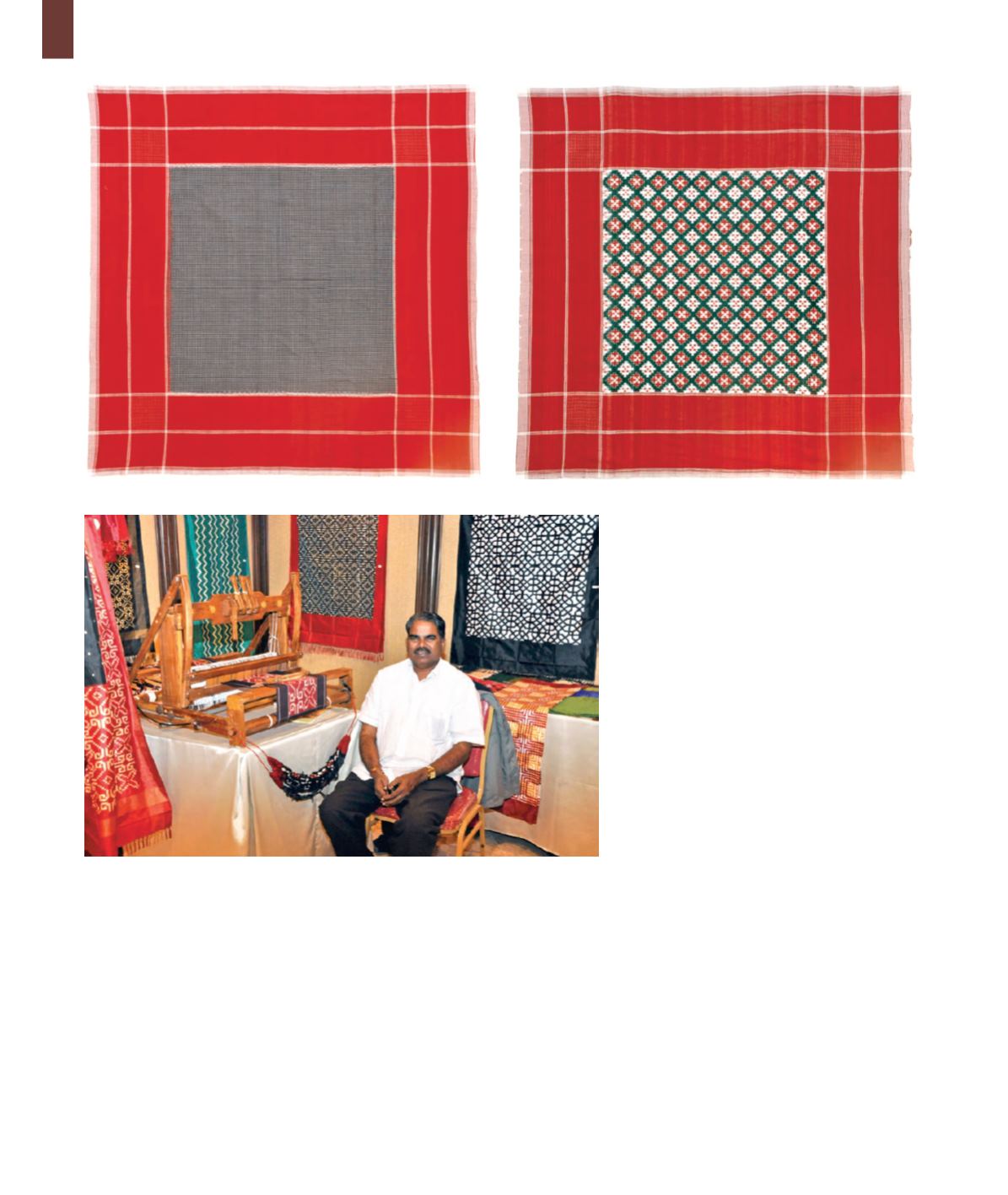
62
and other weaving centres which were under the jurisdiction
of Weavers Service Centre, Vijayawada. With the security
of a steady job and interactions with weavers, new horizons
opened to improve my skills, which was my childhood
dream. During those days, I was sent to many places in India
to give live demonstrations of handloom weaving techniques
as well as at the Theme Pavilions of National Handloom
Expos organised by our department. I met very eminent
handloom weavers like Mohan Mehar and Chaturbhuj
Mehar; Patola weavers of Gujarat who were experts in
double-Ikat weaving; and Ikat weavers from
Odisha. They became my role models and
inspired by their skills, I also decided to weave
masterpieces like they did.
Preserving Traditions
As I was always attracted to the traditional
– though extinct – practice of weaving Telia
Rumals at Chirala, I visited the place when an
opportunity arose in 1975 to find out more
about them. There were no written records
of the textile or its weaving technique. I met
aged weavers, who were no longer weaving but
remembered their forefathers weaving Telia
Rumals. I discussed and learnt the process
from them. Having been born into a family
of traditional Ikat weavers, it was relatively
easy for me to understand the technique of
the preparation of yarn, dyeing the yarns with
natural dyes and the weaving of motifs typical
of Telia Rumals. I returned to my village and
involved my family members in the effort to
revive this beautiful textile. We spent five years
streamlining, perfecting and documenting
the technique and produced exquisite Telia
Rumals. In this way, a tradition that had been
lost was revived, and it migrated from Chirala
in Andhra Pradesh to Puttapaka, Nalgonda
district, Telangana.


